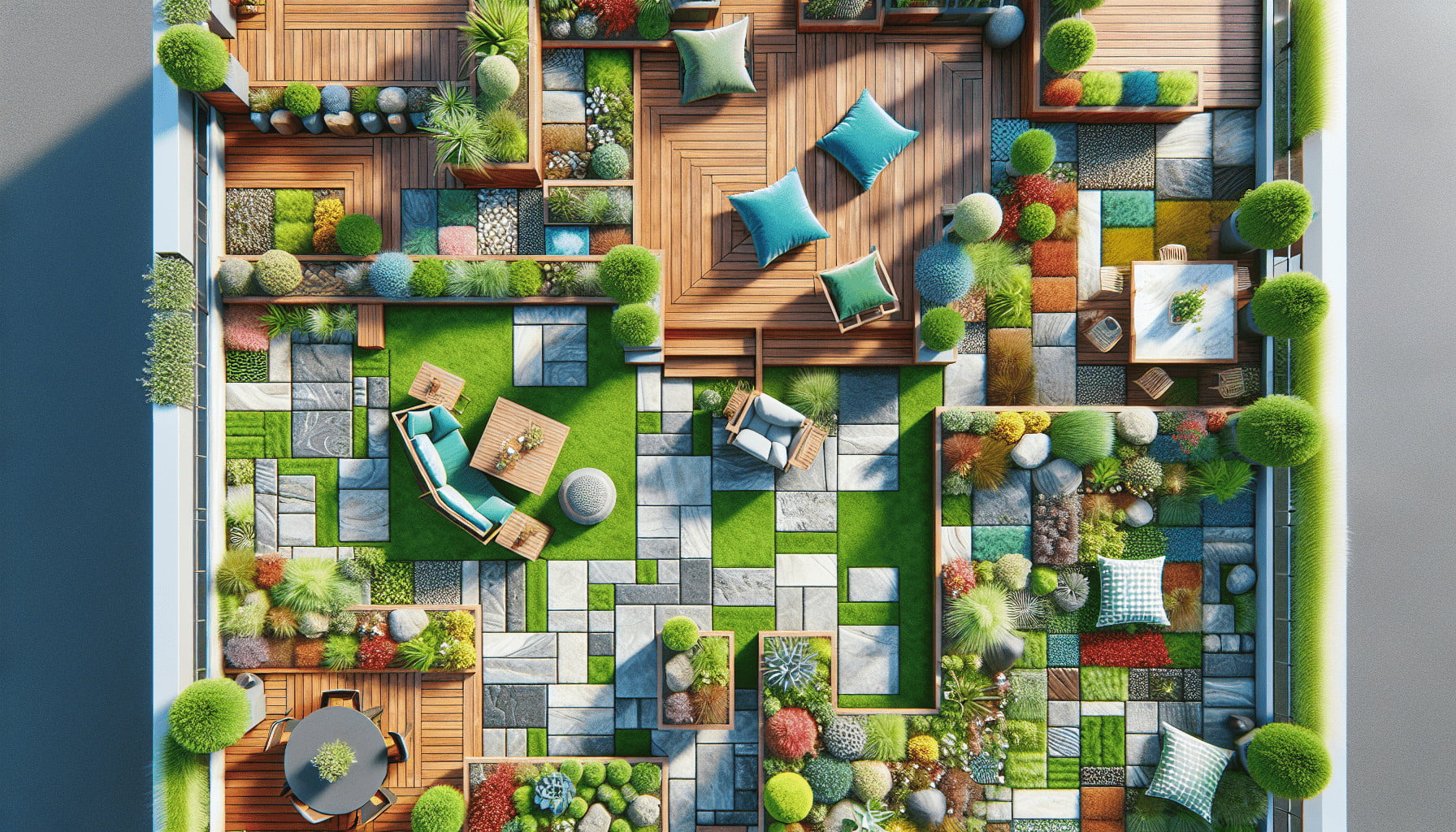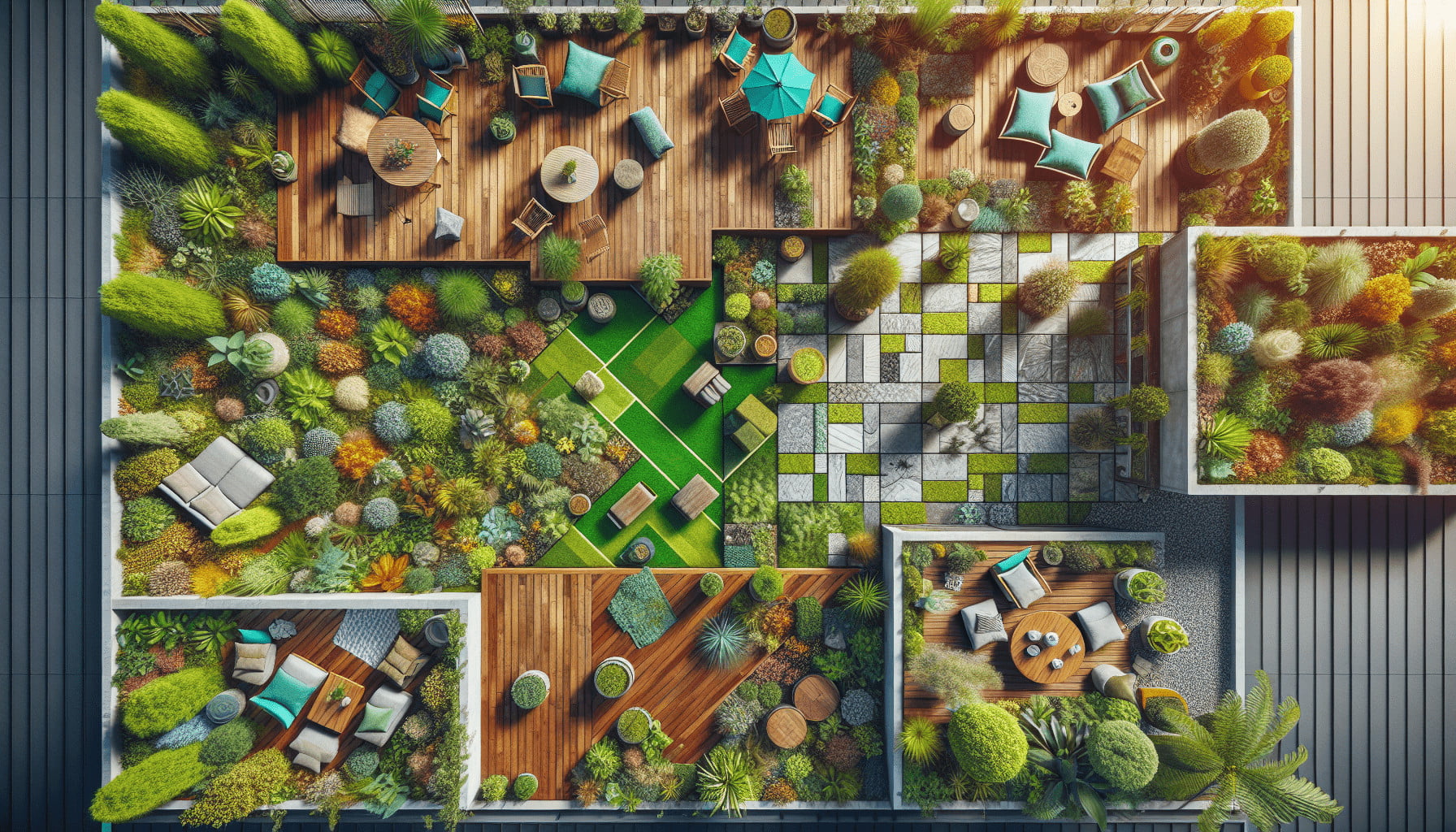Are you thinking about creating a rooftop garden?
Rooftop gardens are a fantastic way to make use of space and create a green oasis in the city. When planning your rooftop garden, one key consideration is choosing the right flooring. The flooring you select will not only impact the overall look of your garden but also its functionality and maintenance requirements.
Consider the climate
Before selecting the flooring for your rooftop garden, it’s important to consider the climate in your area. Different types of flooring materials are suitable for different climates, so it’s essential to choose one that can withstand the elements.
In colder climates, you’ll want flooring materials that can endure freezing temperatures and heavy snowfall. In warmer climates, materials that can withstand high temperatures and intense sunlight are crucial. Take into account the average temperature, humidity levels, and rainfall in your region when choosing the flooring for your rooftop garden.
Determine your budget
Another important factor to consider when choosing flooring for your rooftop garden is your budget. The cost of materials and installation can vary significantly, so it’s essential to determine how much you’re willing to spend before making a decision.
Keep in mind that some flooring materials may require more maintenance or replacement over time, which could increase the overall cost. Consider both the initial cost and long-term maintenance expenses when budgeting for your rooftop garden flooring.
Different types of flooring for rooftop gardens
When it comes to selecting flooring for your rooftop garden, there are several options to choose from. Each type of flooring has its advantages and disadvantages, so it’s essential to consider your specific needs and preferences before making a decision. Here are some of the most common types of flooring for rooftop gardens:
1. Wood decking
Wood decking is a popular choice for rooftop gardens due to its natural look and versatility. It adds warmth and character to outdoor spaces and can be easily customized to fit your design aesthetic. However, wood decking requires regular maintenance, such as sealing and staining, to prevent rot and decay.
If you choose wood decking for your rooftop garden, opt for hardwoods like teak or cedar, which are more durable and resistant to weather damage. Keep in mind that wood decking can be more expensive than other flooring options and may require periodic refinishing to maintain its appearance.
2. Composite decking
Composite decking is a low-maintenance alternative to traditional wood decking that is made from a blend of recycled materials, such as wood fibers and plastic. It is highly durable and resistant to rot, mold, and fading, making it an excellent choice for rooftop gardens.
Composite decking comes in a variety of colors and styles, allowing you to achieve the look of wood without the maintenance requirements. While composite decking is more expensive upfront, its durability and longevity can make it a cost-effective option in the long run.
3. Porcelain pavers
Porcelain pavers are a versatile and durable flooring option for rooftop gardens. They are resistant to frost, heat, and stains, making them ideal for outdoor spaces exposed to the elements. Porcelain pavers come in a wide range of colors, sizes, and textures, allowing you to create a custom look for your rooftop garden.
One of the main advantages of porcelain pavers is their low maintenance requirements. They are easy to clean and do not require sealing or staining like wood decking. While porcelain pavers are more expensive than some other flooring materials, their long-lasting performance and aesthetic appeal make them a popular choice for rooftop gardens.
4. Rubber tiles
Rubber tiles are a practical and budget-friendly flooring option for rooftop gardens. They are durable, slip-resistant, and cushioned, making them ideal for outdoor spaces where safety is a concern. Rubber tiles come in a variety of colors and patterns, allowing you to create a playful or sophisticated look for your rooftop garden.
One of the main advantages of rubber tiles is their easy installation. They can be laid directly on top of existing surfaces, such as concrete or asphalt, without the need for adhesives or grout. Rubber tiles are also low maintenance and can be easily cleaned with soap and water, making them a convenient choice for busy gardeners.

Factors to consider when choosing flooring for your rooftop garden
When selecting flooring for your rooftop garden, there are several factors to consider to ensure you make the right choice for your space. By taking these factors into account, you can create a functional and beautiful outdoor environment that suits your needs and preferences.
1. Weight
The weight of the flooring material is a crucial consideration when designing a rooftop garden. Since rooftops have weight restrictions, it’s essential to choose lightweight flooring options that won’t put too much strain on the structure. Consult with a structural engineer to determine the maximum weight load for your rooftop and select flooring materials that meet these requirements.
2. Drainage
Proper drainage is essential for maintaining the health of your rooftop garden and preventing water damage. Choose flooring materials that allow water to drain efficiently, such as porous pavers or slatted decking. Ensure that your flooring is sloped to direct water away from the building and towards drainage systems to prevent pooling and flooding.
3. Slip resistance
Safety is a top priority when selecting flooring for your rooftop garden, especially if you plan to entertain guests or have children and pets in the space. Choose slip-resistant flooring materials, such as rubber tiles or textured pavers, to reduce the risk of accidents and injuries. Test the slip resistance of different flooring options before making a final decision.
4. Insulation
Rooftops can be significantly warmer or colder than ground-level spaces due to their exposure to the sun and wind. Consider the insulation properties of different flooring materials to help regulate the temperature in your rooftop garden. Materials like rubber tiles and composite decking can provide some insulation, keeping your outdoor space comfortable year-round.
5. Aesthetics
The flooring you choose for your rooftop garden will have a significant impact on its overall appearance and atmosphere. Consider the style and design of your garden, as well as your personal preferences, when selecting flooring materials. Choose a flooring option that complements your existing decor and landscaping to create a cohesive and visually appealing outdoor space.
6. Maintenance
Different types of flooring require varying levels of maintenance to keep them looking their best. Consider how much time and effort you are willing to invest in maintaining your rooftop garden flooring before making a decision. If you prefer low-maintenance options, choose materials like porcelain pavers or composite decking that require minimal care and upkeep.

Conclusion
Choosing the right flooring for your rooftop garden is a significant decision that will impact the overall look, feel, and functionality of your outdoor space. By taking into account factors such as climate, budget, and maintenance requirements, you can select a flooring material that suits your needs and enhances the beauty of your garden.
Whether you opt for wood decking, composite decking, porcelain pavers, or rubber tiles, there are plenty of flooring options available to help you create a stunning rooftop garden. Consider the unique characteristics of each type of flooring and choose one that aligns with your preferences and lifestyle to enjoy a beautiful and functional outdoor oasis right at home.
